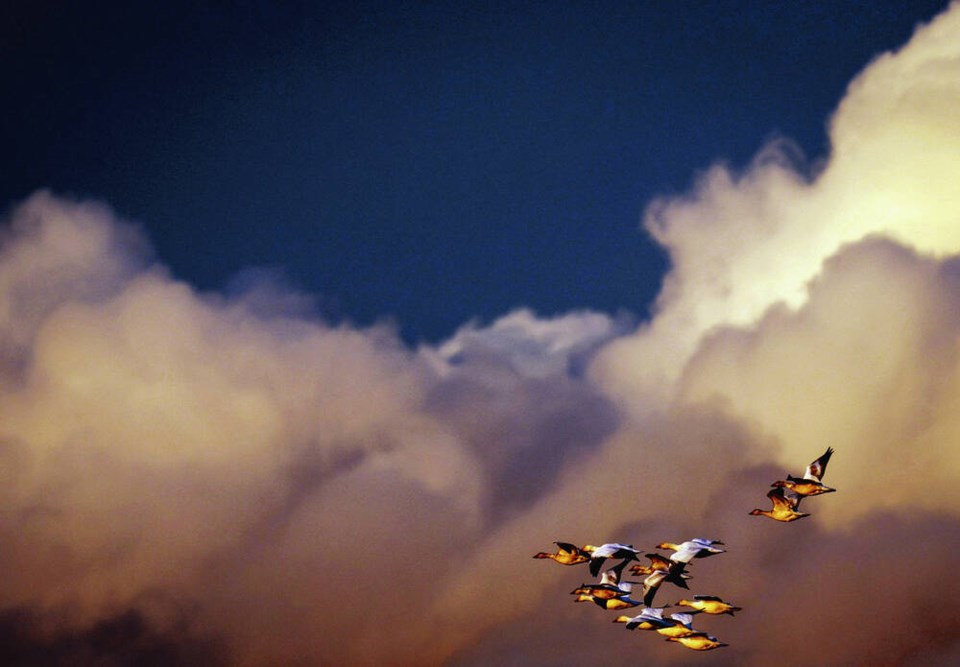This morning, many folk on the Saanich Peninsula and Salt Spring and Galiano islands have traded their usual Sunday routine for an early start outdoors.
Farther south, in the Victoria region, others did the same yesterday. Those in the Sooke and Duncan areas will do the same in the last days of the year.
These early risers are counting birds.
The Christmas Bird Count is a winter tradition for thousands of Canadians. From mid-December to early January, volunteers in more than 2,000 communities across North America head out to look for as many birds as they can find in one day in the area assigned to each community.
In Canada last year, more than 10,500 people tromping through parks, fields, woods and neighbourhoods and more than 4,350 people keeping track of the birds visiting their backyard feeders reported 3,460,743 individual birds from 294 species in 473 communities.
Of these, participants from Victoria and Sidney-South Salt Spring reported two of the country’s five highest species counts — 136 and 121.
This year, the number of human participants may well be higher, but the final number of individual birds and species tallied may not be so positive.
As we’ve heard over the last two weeks, during NatureCOP15 (the 15th Conference of the Parties to the UN Convention on Biological Diversity) in Montreal, and last month, during COP27 (the UN Climate Change conference) in Egypt, biodiversity loss is a widespread disaster that threatens the health of people and nature alike.
Loss of wildlife habitat is putting species at risk and causing communities to lose access to vital natural services — pollination, insect control, etc. — that allow them to thrive and succeed.
The loss of birds is part of this. According to the Canadian chapter of the North American Bird Conservation Institute (also known as NABCI), Canada alone has lost 40 to 60 per cent of the populations of our shorebirds, grassland birds, and swift, swallow and other aerial bug-munching birds since 1970.
Data collected during Christmas Bird Counts have helped reveal these disturbing trends.
Each community’s count contributes to one of the world’s largest wildlife survey data sets, and builds a picture over the years of the bird species and numbers overwintering in participating communities.
Conservation scientists, environmental planners and others use the information to assess the health of bird populations at the local, regional and larger scale. The count can reveal, for example, if, when, where and how a species is declining.
This, in turn, provides insights into what might be happening in our environment. The information can help direct researchers where and what to look at more closely, and it can help conservation planners and policymakers better tailor their approaches.
According to analyses of the data collected during these and other bird counts here, across North America and in other parts of the world, the greatest number of the world’s threatened bird species depend on environments being transformed by agriculture, logging, hunting and trapping, invasive alien species, residential and commercial development, and fire and fire suppression.
Vancouver Island is no stranger to many of those pressures.
As Patricia Zurita, CEO at BirdLife International, is reported to have said in an interview this summer with non-profit environmental science news platform Mongabay: “Birds are messengers. Bird population declines are telling us that something is terribly wrong with how we manage our natural resources. But bird conservation successes have also shown us that when we listen to what birds are telling us, we can save them and improve human well-being too.”
The federal government has committed to halt and reverse biodiversity loss in Canada, including by protecting 30 per cent of land and ocean by 2030 and supporting Indigenous leadership in conservation.
Premier David Eby’s recent mandate letter to B.C.’s new minister for water, land and resource stewardship mirrors those goals.
In the letter, the premier tasked Nathan Cullen with finding ways to partner with the federal government, First Nations, industry and communities to protect 30 per cent of the province’s landbase by 2030, including Indigenous protected and conserved areas.
This provides hope. Over the coming years, biodiversity data we, our friends and neighbours are collecting this year and have collected in past years during the Christmas Bird Count may help identify critical environments and save some of the places that make this region a healthy, functioning habitat for birds, other wildlife and humans.
In other words, counting birds counts. And birds count, too.
keiran_monique@rocketmail.com



